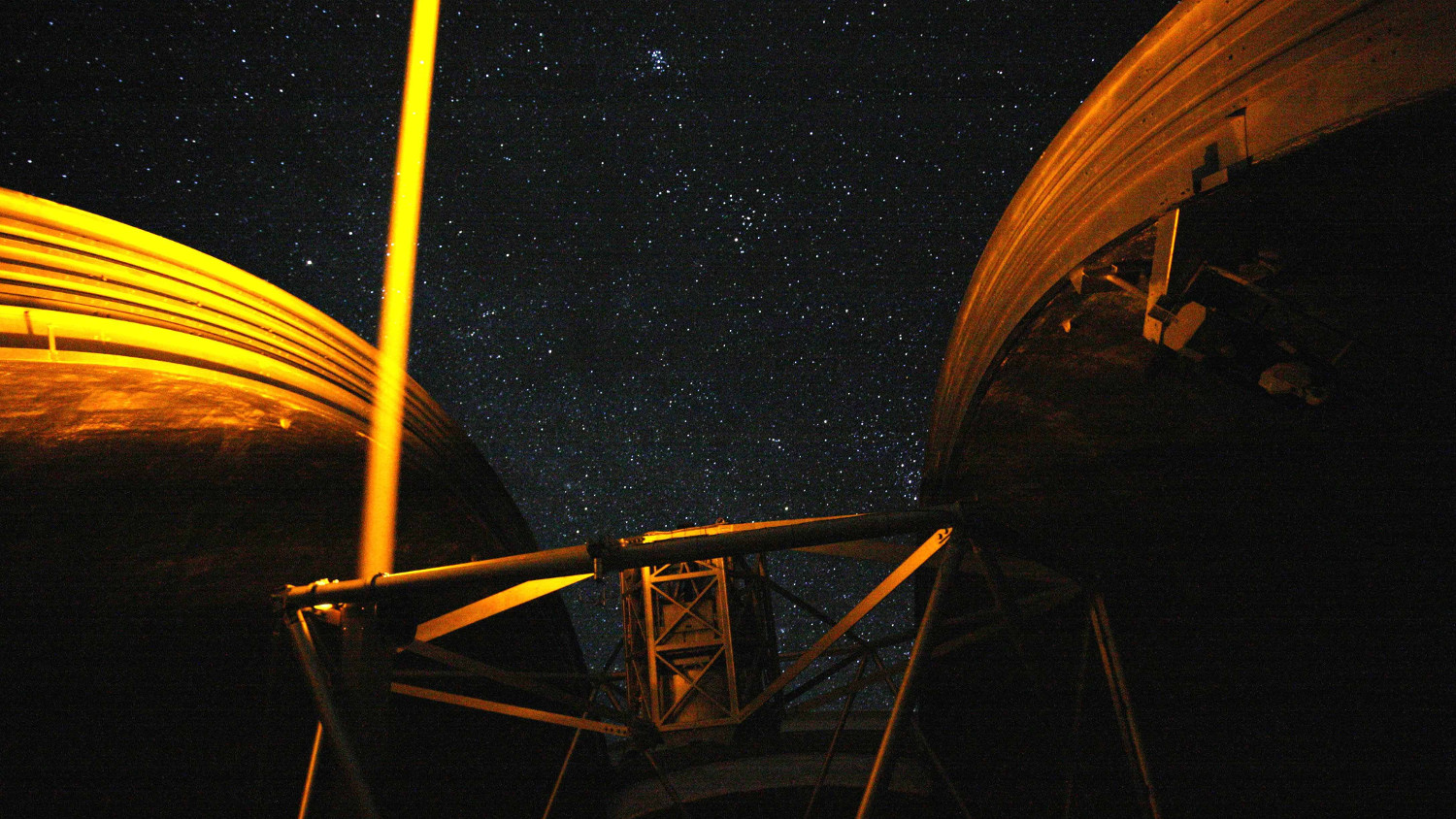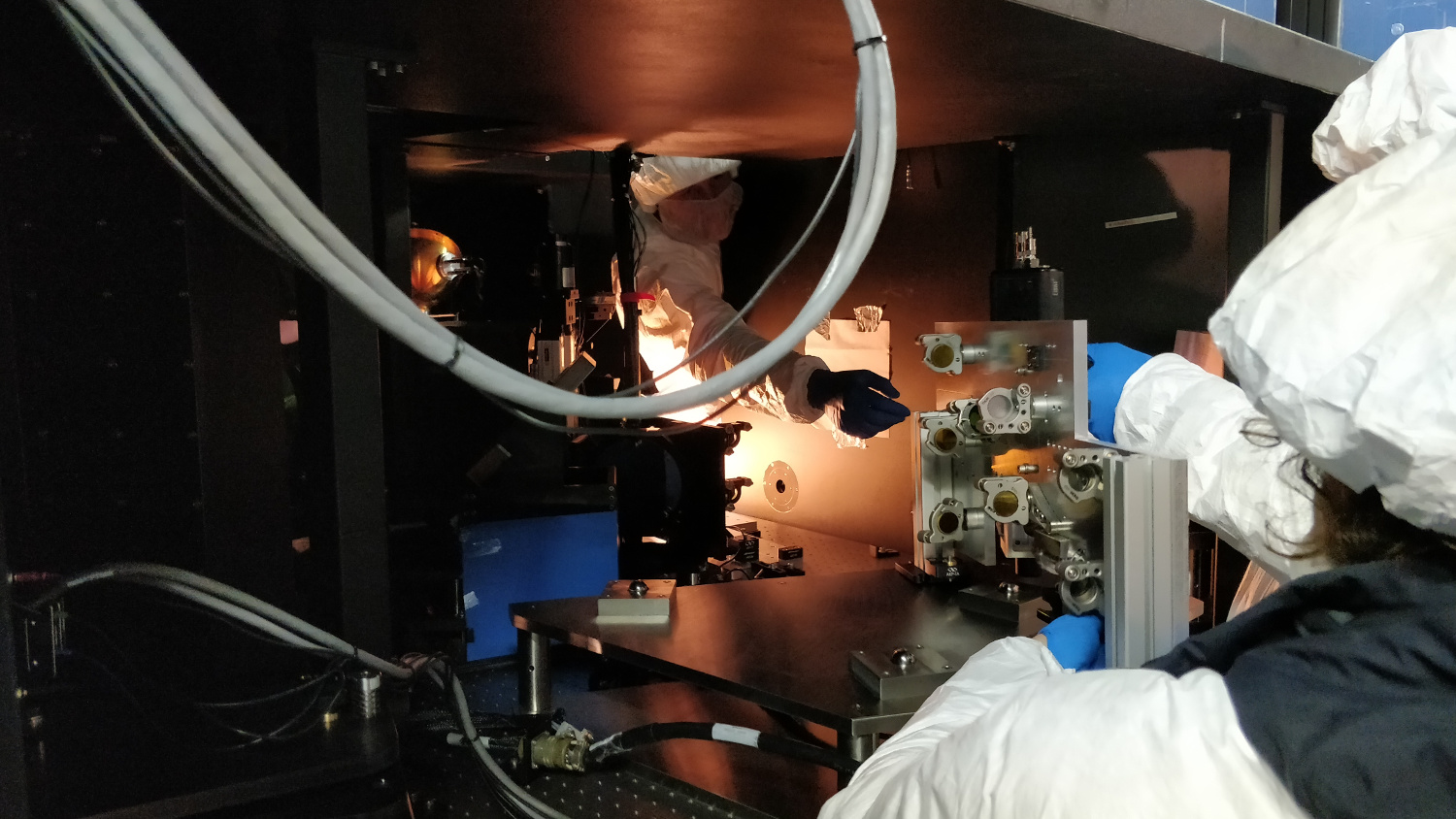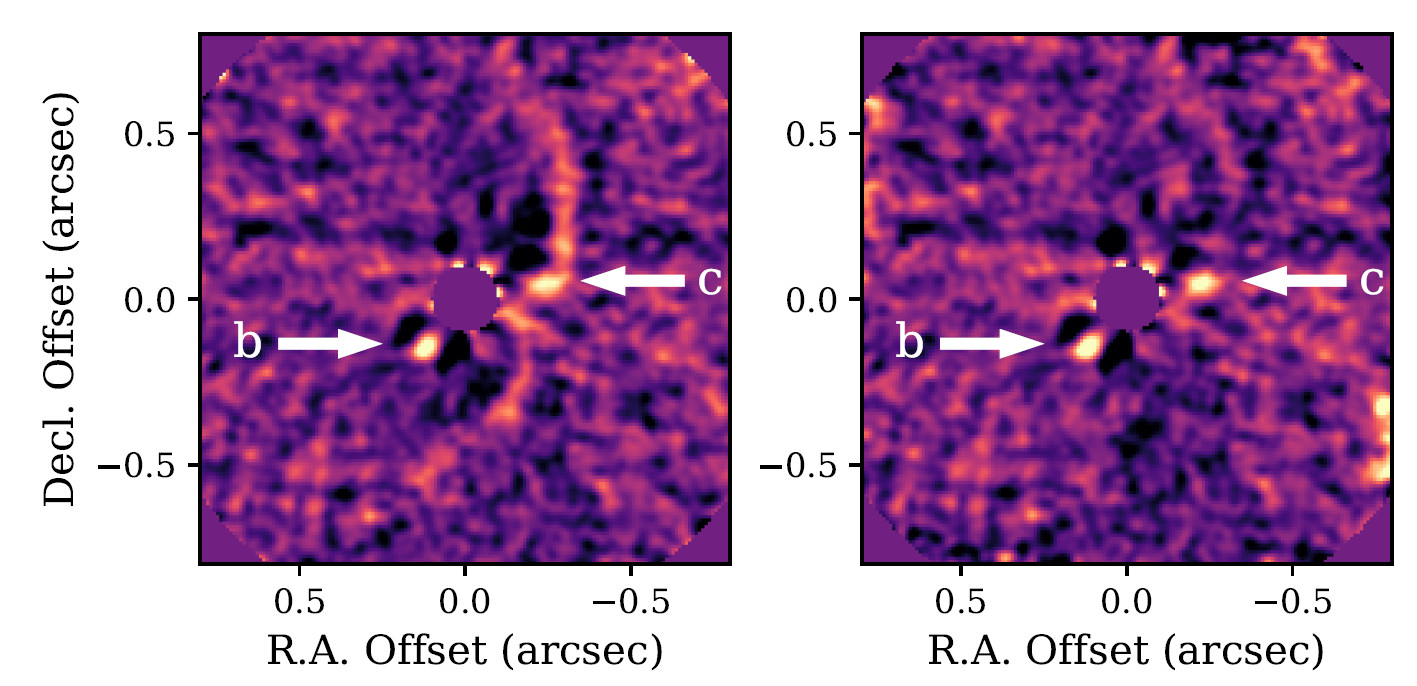(BIVN) – The adaptive optics (AO) system on W. M. Keck Observatory’s Keck II telescope has been upgraded, and now features the very first infrared pyramid wavefront sensor available for scientific use.
“It’s like adding night-vision goggles to Keck’s AO system,” the observatory said in a news release.
“AO is a technique used to remove the blurring of astronomical images caused by turbulence in the Earth’s atmosphere,” Keck representatives wrote. “With the new infrared pyramid wavefront sensor, Keck II’s AO system can better detect cooler, hard-to-see objects in the universe such as exoplanets, protoplanets, and young dwarf stars.”
Details were provided in this media release:
W. M. Keck Observatory can now provide adaptive optics (AO) correction using light from cosmic objects at wavelengths invisible to the naked eye. Near-infrared AO wavefront sensing, in addition to sensing in visible light, is a new capability on the Keck II telescope thanks to a major upgrade, which involves the installation of an innovative infrared pyramid wavefront sensor.
The paper detailing the project is published in the Journal of Astronomical Telescopes, Instruments, and Systems.
“This is the first infrared pyramid wavefront sensor available for scientific use. Most observatories use visible-wavelength Shack-Hartmann or pyramid wavefront sensors,” said Peter Wizinowich, chief of technical development at Keck Observatory and principal investigator for this project.
Adding a pyramid wavefront sensor in the infrared is exceptionally useful in direct imaging and detecting cooler, hard-to-see astronomical objects such as exoplanets and young dwarf stars where planet formation commonly occurs.
“It’s like adding night-vision goggles to Keck’s AO system,” said lead author Charlotte Bond, a postdoctoral AO scientist who led the project development team. “The infrared pyramid wavefront sensor is especially desirable for the study of baby exoplanets, which are expected to orbit cooler, redder stars or be shrouded in dust, making them faint at visible wavelengths but relatively bright in the infrared.”
AO technology removes the blurring effect caused by turbulence in the Earth’s atmosphere, resulting in sharper views of the universe. This technique relies on a star, either a real one or an artificial star created by a laser, near the object of interest as a reference point; the wavefront sensor measures the atmospheric blurring of the starlight, then a deformable mirror shapeshifts 1,000 times per second to correct the distortions.
The new wavefront sensor is highly-sensitive; it uses a four-sided pyramid prism to split the incoming starlight and produce four images of the telescope’s primary mirror on a detector placed behind the prism. The distribution of light between the four images provides superior accuracy in measuring atmospheric blurring.
The University of Hawaiʻi Institute for Astronomy provided the camera for the pyramid wavefront sensor which is based on a new technology, very low noise, infrared avalanche photodiode array.
The Keck II telescope’s AO upgrade also involves a new GPU-based real-time controller (RTC) that analyzes the image coming from the pyramid wavefront sensor then controls the deformable mirror to correct the atmospheric distortions. The software architecture implemented on the RTC is based on code developed by Olivier Guyon at Subaru Telescope.
“This has been one of the most exciting projects I’ve ever worked on,” said co-author Sylvain Cetre, a software engineer at Keck Observatory and one of the lead project developers. “The new RTC performs heavy computations in the shortest time possible at very high speeds, resulting in a dramatic improvement in image quality.”
The success of the Keck II telescope AO upgrade was most recently proven in May by Jason Wang, a Heising-Simons Foundation 51 Pegasi b Fellow at Caltech, when he and his team tested the new technology and captured remarkable direct images of the birth of a pair of giant exoplanets orbiting the star PDS 70.
The upgrade was also used during the testing phase over the past year to study a nearby binary star whose past orbit was the closest known flyby to our solar system.
Keck Observatory has since made the new AO system available for regular science observations, beginning in August of 2020.
With this upgrade in place, astronomers can now take images with more exquisite detail than ever before. This advanced AO capability will be used to deepen our knowledge of planetary formation, dark matter, dark energy, and more.
According to Zoran Ninkov, a program director at the National Science Foundation, “NSF’s Advanced Technologies and Instrumentation program and Mid-Scale Innovations Program have supported advances in AO systems like this, which allow ground-based telescopes to attain images as sharp as those obtained from space. This new infrared pyramid system at Keck will provide an exciting new window on faint and cool objects like exoplanets, perhaps even finding some that could support life.”
“I had been thinking about the potential performance advantages of a near-infrared wavefront sensor for well over a decade,” said Wizinowich. “It is gratifying to see this breakthrough technology finally manifest.”
This project was supported by NSF’s Advanced Technologies and Instrumentation program (award number 1611623) and developed in collaboration with the University of Hawaiʻi (UH), Caltech, Subaru Telescope, Arcetri Observatory, and Marseille Astrophysics Laboratory. Wizinowich served as the Principal Investigator who worked with co-Principal Investigators Dimitri Mawet, astronomy professor at Caltech and senior researcher at JPL, and Mark Chun, specialist/associate director of UH Institute for Astronomy – Hilo.




by Big Island Video News7:45 am
on at
STORY SUMMARY
MAUNAKEA, Hawaiʻi - W. M. Keck Observatory’s Keck II telescope now features the very first infrared pyramid wavefront sensor available for scientific use.